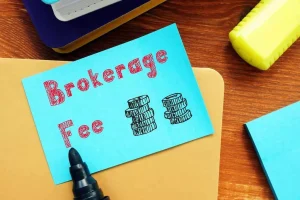The world of digital money is changing dramatically, but for many users, entering this market seems too complicated. On-ramp off-ramp crypto platforms act as a bridge between regular and virtual money. They allow you to exchange dollars, euros, yuan, and other fiat currencies to get crypto coins and vice versa. It makes virtual money accessible to various categories of clients. This blog post explains how on-ramp vs off-ramp platforms work and their benefits.
What is a Crypto On-Ramp?
A crypto on-ramp is a portal that enables participants to swap standard cash (American dollar, euro, or yen) into virtual coins and stablecoins. Such procedures are carried out with debit and credit cards, bank transfers, or e-wallets. It acts as a starting point into the cryptocurrency environment, allowing users to easily switch from standard money to a digital asset.


Turnkey Brokerage Solution For Your Business
Get the most profitable fully licensed fx/crypto brokerage software or ready-to-operate business in 48 hours. Best-in-class web & mobile trading platforms, sales-driven CRM, full integration with MT4/5, and 150+ payment providers.
How do crypto on-ramps function?
Understanding what crypto platforms are and how they interact with clients, we may easily imagine the workflow. It includes the following steps.
- Finding a portal and creating a purchase order. The participant must select a responsible service and make a purchase order to convert fiat money into virtual cash. In most cases, the form must select the optimal currency pair (e.g., US dollar and Ethereum), the client’s wallet address, and tokens to purchase.
- Selecting a payment system. After specifying all the data and placing an order, you must define the optimal payment system. Different platforms offer customers the opportunity to use bank cards, Google Pay, Apple Pay, e-wallets, and regional payment systems. At this stage, you can complete the operation.
- Checking the balance of the wallet. After the transaction is completed, log in to your wallet. Please note that the platform facilitates a quick purchase of virtual assets; however, the blockchain requires time to process the transaction. This procedure can take from a minute to several hours.
Many portals require verification in accordance with KYC standards. Users must present documents to confirm their identity and, in some cases, to check their place of residence. Platforms must also adhere to AML norms.
What are crypto on-ramps good for?
Crypto on-ramps address key barriers to virtual money adoption and offer multiple profits. Let’s examine their primary areas of application.
- Crypto exchanges. These portals enable clients to deposit standard money and receive preferred cryptocurrencies. Exchanges typically provide an intuitive interface that is appealing to beginners.
- Modern DeFi applications. Decentralized financial applications for monitoring an investment portfolio suggest people on-ramps to convert their funds into virtual cash and participate instantly. This makes it simpler to attract new participants who do not yet have virtual savings.
- NFT trading platforms. Non-fungible token (NFT) platforms, as a rule, adopt on-ramps to enable people to buy virtual cash directly on the portal. It allows them to receive NFTs within the app.
Today, even large hedge funds and corporations utilize on-ramps with high-limit operations and KYC/AML compliance to start their activity in the virtual cash sector.
What is a Crypto Off-Ramp?
Off-ramp is a platform that enables clients to swap virtual cash (Bitcoin, Solana, etc.) and stablecoins into fiat money. People can then transfer money to standard financial solutions, such as bank accounts or debit cards. They allow people to get rid of their virtual savings.
How do crypto off-ramps work?
The off-ramps optimize the procedure of converting virtual cash into fiat. Let’s examine the primary stages of the activity.
- Selecting a service. Asset owners choose an off-ramp provider integrated into wallets or a separate service. When you begin interacting with the platform, you will need to complete KYC verification to avoid unauthorized operations.
- Choosing virtual cash to sell. Participants select the virtual cash and the sum to convert, e.g., 1 Solana.
- Selecting the destination of fiat funds. Customers specify where they want to transfer fiat cash. The most popular options are a bank account, a debit card, or a digital wallet. Payment details must also be entered, including name and surname, IBAN, and recipient address.
- Conversion and transfer. The portal converts virtual coins into fiat at the current rate and charges a commission (usually 3-5%). The money is then deposited into the account selected by the client. The procedure takes from a minute to several days, depending on the selected payment system.
Advanced platforms use encryption and secure protocols to protect participant information. Some services also suggest activating two-factor authentication (2FA).

What are crypto off-ramps good for?
Such solutions have found wide application; let’s consider several famous options.
- Cryptocurrency exchanges (DEX and CEX). Off-ramps enable clients to perform operations with online coins and convert them into standard cash. This is a quick and straightforward algorithm to exchange virtual assets.
- Payment systems. Firms that offer algorithms of crypto payment processing utilize off-ramps to accept digital cash and convert it into selected fiat currencies.
- Online stores. E-commerce firms that accept virtual cash as payment for goods can choose such ramps to swap virtual coins received from clients into standard cash to form a stable cash flow.
Any firm that interacts with online coins, accepts them for financial operations, or suggests services associated with them may utilize such ramps to maximize profits.
What Issues do On and Off-Ramp Crypto Solutions Address?
On-ramp off-ramp crypto narrows the distinctions between standard currencies and virtual cash. Below, we analyze the primary problems they successfully solve.
- Mass adoption. Without on-ramp, virtual assets would be problematic to buy with fiat money. This would create problems when entering the market and reduce the attractiveness for new customers.
- Financial accessibility. Such systems allow people from regions with low banking infrastructure development to become part of the global virtual economy.
- Liquidity and utility. OTC operations generate liquidity, allowing owners to withdraw or spend virtual cash when necessary. Such features add real benefit and value to online coins.
- Industry development. Accessibility and easy interaction with ramps stimulate the prosperity of DeFi and new blockchain instruments.
- Regulatory compliance. Responsible ramp systems employ KYC and AML procedures. This makes crypto coins legitimate in the eyes of governments and financial establishments. Encouraging the expansion of virtual currency while strengthening client trust is essential.
Solving such problems with fiat ramp ensures easy interaction between traditional finances and virtual coins for ordinary clients, firms, and developers.
Why Are On and Off-Ramp Crypto Solutions Important?
Ensuring a smooth conversion of online coins to fiat cash is critical to improve capital movement and decrease dependence on sector volatility. Such processes enable firms to predict their financial position and allocate resources accurately.
Cryptocurrency platforms allow businesses to expand their customer base by accepting payments in digital assets. This increases accessibility for customers and simplifies global reach.
The ability to flexibly switch between virtual cash and US dollars, euros, or pounds sterling is critical for firms, as they face strict financial and accounting norms. It means that they must use only fiat money in their operations.
As we can see, on-ramp off-ramp crypto provides easy work with crypto coins. This expands the audience of existing blockchain projects and boosts the potential of existing firms. It is helpful for beginners, experienced participants, and those who are waiting for the digital revolution.






